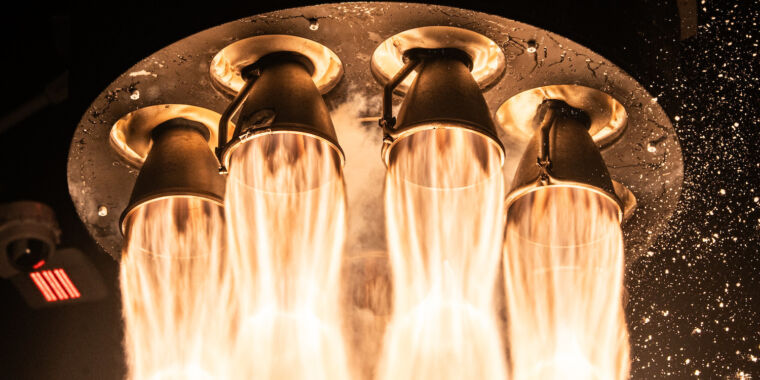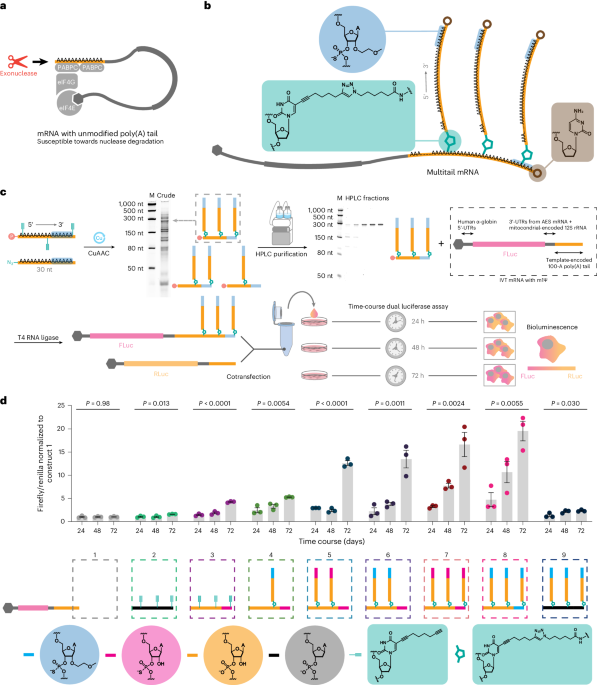[ad_1]
The Biden administration announced new automobile standards aimed at slashing greenhouse gas emissions in half by 2032 while also allowing automakers to meet their targets at a slower pace than originally proposed.
The new standards were not as strict as the proposal laid out by the Environmental Protection Agency last year, in which automakers would have been required to reduce emissions by over two-thirds by 2032. Car companies and the autoworkers union opposed the plan, citing recent slower sales growth of electric vehicles and the popularity of some hybrid vehicles as proof that customers were still not ready to make the full switch to fully electric vehicles.
The new standards were not as strict as the proposal laid out by the Environmental Protection Agency last year
The EPA suggested that under the stricter rules, the auto industry could meet the requirements if 67 percent of new vehicles sold were EVs by 2032. Instead, the Biden administration’s standards would slow the implementation from 2027 through 2029 but then ramp up to meet the levels preferred by the EPA from 2030 to 2032.
“Today, we’re setting new pollution standards for cars and trucks,” President Biden said in a statement. “US workers will lead the world on autos making clean cars and trucks, each stamped ‘Made in America.’ You have my word.”
The emissions rules set performance standards based on grams of greenhouse gases per mile, but they don’t require automakers to sell EVs. In fact, administration officials insisted the standards were “technologically neutral,” acknowledging that hybrid vehicles will also help meet the targets. Still, requiring steeper cuts in emissions would essentially force the auto industry to sell more EVs in order to comply with the standards.
“I think what you see in the final rule is increased flexibility that still delivers massive gains for public health and for the environment,” Ali Zaidi, the White House’s climate advisor, told The Verge.
Under the final rules, light-duty vehicles (passenger vehicles like sedans, SUVs, and trucks) would be required to hit an industry-wide target of 85 grams of greenhouse gas (GHG) emissions per mile by 2032, down from 170 grams / mile in 2027. For medium-duty vehicles (big trucks and vans), the EPA is mandating a 44 percent reduction in GHG emissions to 274 grams / mile in 2032 from 461 grams / mile in 2027.
The EPA says that the new standards will result in a reduction of 7.2 billion metric tons of harmful carbon dioxide emissions over the life of the program and approximately $13 billion in health benefits.
“For the person who thinks, ‘Gee, is my country doing what it needs to do to step up at this moment of crisis and lead by example?’” Zaidi said. “The answer is yes.”
But environmental groups have warned that more aggressive action is needed to tackle climate change. The transportation sector, which includes privately owned vehicles, accounts for over a quarter of all planet-heating emissions spewed into the atmosphere globally. In the lead-up to the announcement, climate activists urged the White House to reject the auto industry’s push for slower implementation and adopt the stricter standards.
The planet has gotten about 1.2 degrees Celsius hotter since the Industrial Revolution, and that’s already been enough to cause more extreme weather, intensify wildfires, and raise sea levels high enough to . To keep those kinds of disasters from getting much worse, the Paris agreement seeks to limit warming to around 1.5 degrees Celsius.
But the slowdown in EV sales growth proved to be more influential, as well as lobbying by the United Auto Workers, which recently endorsed President Biden’s bid for reelection. EV sales grew 47 percent over 2023 to reach nearly 8 percent of all vehicles sold. But that growth slowed in the final months of the year and into 2024, as high prices and concerns about charging turned some customers away. Meanwhile, hybrid sales grew at a faster rate than battery-electric vehicles.
Slowing down the timeline “was the right call,” said John Bozzella, president and CEO of the Alliance for Automotive Innovation, the industry’s main lobbying group, in a statement. “These adjusted EV targets – still a stretch goal – should give the market and supply chains a chance to catch up.”
The administration is hoping that these emissions rules, combined with financial incentives included in the Inflation Reduction Act, the president’s signature climate initiative, will help pave the way for greater adoption of electric vehicles.
The political jockeying over emissions rules has been intense over the past several administrations. After he was elected in 2016, Donald Trump rolled back emissions standards put in place by Barack Obama, making it easier for automakers to produce polluting cars. But Biden reversed the rollback soon after coming into office.
For the Biden administration, these rules represent a central pillar in the president’s climate goals. Right after taking office, Biden signed an executive order laying out his vision for half of all new car sales to be tailpipe emissions-free by 2030.
But there have also been delays. The EPA said recently it wouldn’t finalize its rules for emissions from gas-fired power plants in the US until after the November election, teeing up a scenario in which the rules are left unchanged if Biden loses his reelection bid to Donald Trump.
On the campaign trail, Trump has zeroed in on electric vehicles as a potential wedge issue, portraying them as expensive, hard to charge, and unpopular with most Americans. But the White House insists that the new standards will ensure that consumers still have choices when selecting a new vehicle.
“The bottom line is, this shows that leadership matters,” Zaidi said. “President Biden has prioritized public health, he’s prioritized environmental protection, he’s prioritized tackling the climate crisis, and he’s prioritized consumer savings.”
Update March 20th 11:47AM ET: Updated to include a statement from the auto industry’s main lobbyist.
Maqvi News #Maqvi #Maqvinews #Maqvi_news #Maqvi#News #info@maqvi.com
[ad_2]
Source link





































/cdn.vox-cdn.com/uploads/chorus_asset/file/25345742/2087330089.jpg)











